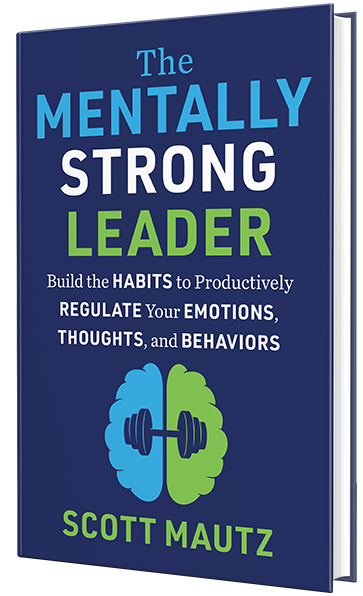
INSIGHTS (on leadership/self-leadership)
One of the great myths is that there’s not enough time. When I catch myself thinking this, if I pause, and I’m honest with myself, a lack of time is almost never the real culprit. It’s usually one of the “Too Late Eight,” one of eight things that are actually lacking (as opposed to enough time). More likely, there’s not enough:
1. Prioritization
2. Focus
3. Willpower
4. Discipline
5. Passion
6. Organization
7. Commitment, or
8. Creativity
The next time you catch yourself thinking, “There’s not enough time,” ask yourself, “What’s there really not enough of here?” Check the list above, check your assumptions, and check out how much you then accomplish by amping up what’s really missing.
IMPERFECTIONS (a mistake many make)
What if I told you the goal is NOT to always be happy?
It’s an unrealistic goal many mistakenly shoot for. Human beings have ups and downs in life, period. In fact, it’s the occasional downs that can make the ups all that more satisfying. Constant happiness is made more elusive by the fact that we adjust to our circumstances, resetting the bar for what will make us happy, which quite often means MORE of something. For example, say you get a nice raise at work, which makes you happy. At some point, you get used to that new salary, and you eventually want more, thinking, you’ll be happy again when you get more. It’s this constant resetting of the baseline of what makes you happy, the continual need for more, to achieve that next milestone, that can prevent you from actually being happy! As I share in my LinkedIn Learning course, Happiness Habits, the key, then, is to be aware of the Great Happiness Trap. That is, believing:
“I’ll be happy when…”
Ever find yourself thinking this? It’s natural if you do. But it doesn’t change the fact that one more thing, that little bit more, won’t really make you happy. Profoundly happy people will tell you that happiness isn’t a destination, something you find. It’s an ongoing, daily pursuit, like nutrition, or staying physically fit. In fact, as happiness researchers broadly believe, think of happiness as a muscle to build. You have to feed that happiness muscle regularly or it weakens. The stronger you make the muscle, the more visible it is and the more it supports you, helping you recover more quickly from down times. A strong happiness muscle equals a stronger, happier, you.
IMPLEMENTATION (one research-backed strategy, tip, or tool)
One of the most effective task prioritization tools ever created comes from former US president and five-star general, Dwight D. Eisenhower. Known as the “Eisenhower Matrix,” here’s what it looks like:

And here’s how it works. Plot your list of tasks on the above matrix, considering two fronts – how important that task is, and how urgent it is.
· Tasks that are important and urgent, fall into the “DO NOW” quadrant.
· Tasks that aren’t important, but are urgent, fall into the “DELEGATE” quadrant.
· Tasks that aren’t important or urgent, fall into the “DO NEVER” quadrant.
· Tasks that are important but not urgent, fall into the “DO NEXT” quadrant.
– Note that “do next” can mean literally, the next thing you do, or it’s a task you need to schedule
later, even if it falls to the last task you do on your list.
That’s it. Don’t be fooled by the simplicity of this tool. If you use it consistently, and are disciplined about really doing what each quadrant demands, it’s a tremendous aid to smart prioritization.




Leave a Reply